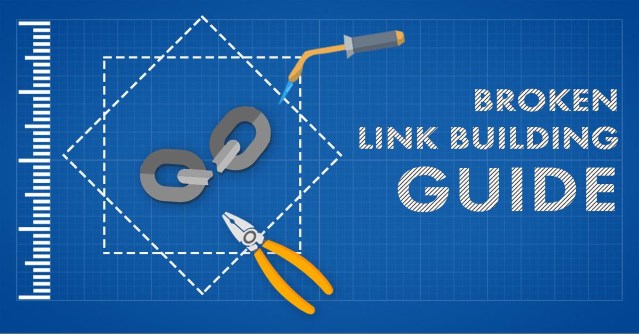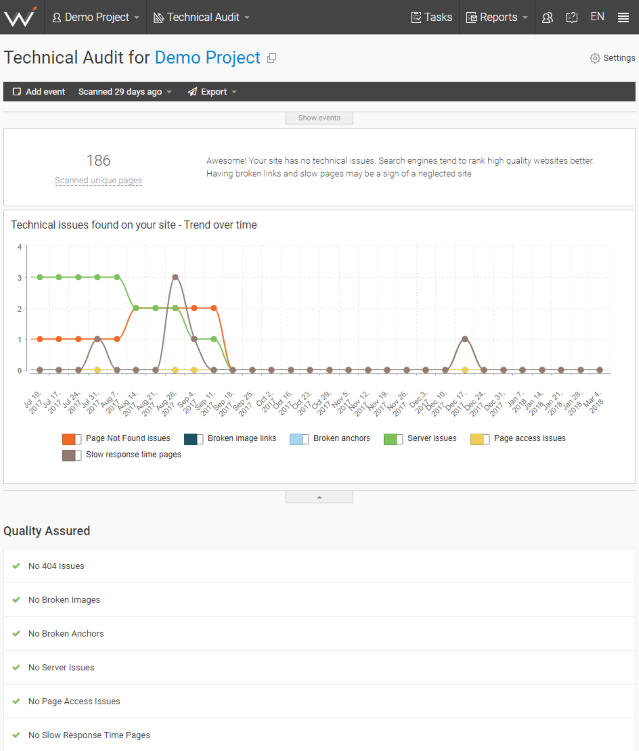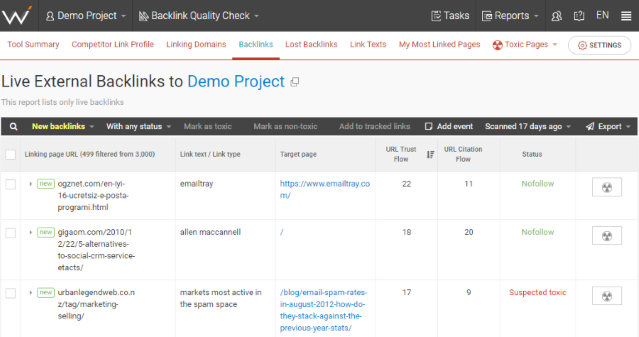
Have you experienced reading an article online and clicking a related link, but it turns out not to be working? It’s frustrating, right? But that’s the reality of the Internet.
A broken link can be a deal-breaker for many readers. Websites that rely on customer engagement may be struggling with this problem. And right there is an opportunity for you called broken link building.
If you’ve been working with SEO for a while, you’ve most likely heard of it. If you haven’t, then you’ve come to the right place. Today, we’ll talk about broken link building and give you a practical guide on how to secure links at scale.
What Is Broken Link Building?
Broken link building is a marketing tactic of finding broken links on other websites, contacting the webmaster about it, and recommending your own website as a replacement for the links.
It provides a win-win solution for marketers and website owners. In addition, it presents a long-term strategy as, every day, millions of links become broken due to various causes. Because of the nature of the Internet, broken link building is less likely to become obsolete.
Is Broken Link Building Effective?
Yes, it is. As a marketing strategy, broken link building relies on the principle of reciprocity. When someone does something nice for you, your automatic response is to reciprocate the good deed.
Reporting a broken link is a favor that you’re extending to the website owner. Not only are you making them aware of a problem, but you’re also offering a solution. So when you offer your website as a replacement link, they’ll be more receptive to your recommendation.
Scaling Broken Link Building
In order to maximize the benefits of broken link building, your goal must be to scale it.
It works in the same way that making a sale does. Imagine that you’re a salesperson and your website is your product. Going door to door promoting your product is more tedious and less profitable compared to making a bulk sale.
Similarly, doing broken link building on a large scale will reap more benefits with less effort.
Step-By-Step Guide to Securing Links at Scale
Step 1: Get the right tools
The first step in broken link building is to know what tools you need. There are millions of links on the Internet, so you’ll need tools to help reduce the work.
Numerous tools are available, but here are some of the most effective:
This tool can scan a website’s pages for errors, as long as you have created a project for that website. It detects broken images, server errors and, of course, broken links. You can also set this tool to automatically scan your site and send you reports weekly or monthly.
It is available as a Chrome extension. It allows you to instantly check for broken links on a page. Since it’s a Chrome extension, it appears beside your address bar after installation. You can simply click its icon, and it will scan all links on the page. Broken links will be highlighted in red. As an alternative, you can use Domain Hunter Plus.
This is a tool for site crawling or web indexing. It checks the web for broken links. It searches website URLs and finds broken links and server errors. You can also use Screaming Frog SEO Spider.
Step 2: Find your prospects
The next step is to look for relevant dead or broken pages. There are different methods you can employ in doing this. You can choose one or combine several.
- Keyword Targeting
This is the most common and straightforward method in broken link building.
Start by identifying a keyword that is both relevant to your site and generally broad in scope.
Then, search for your target keyword in Google. Visit the top results displayed as those typically contain the most number of links.
Next, plug the URLs of the top results one at a time into a link database tool. The tool will give you a list of pages linked to those top result articles.
Scan all of the pages for broken links using Check My Links or Domain Hunter Plus. Alternatively, you can extract the URLs using Xenu’s Link Sleuth.
- Niche Targeting
With this method, you’ll target sites in your niche. Use this if you’re aiming for relevant results more than scope. You’ll still use keywords, but only those specifically used in your niche. After determining niche-specific keywords, follow the steps in the keyword-based method.
- Domain Targeting
Use this method if there’s a particular site you’re eyeing. A backlink from an authority website can do so much for your website. However, it’s hard to get noticed by the popular sites. Broken link building may be your way in.
To do this, identify the domain that you want to target. You can use WebCEO’s Technical Audit to scan the website and receive a report of dead links.
Other web crawler tools, such as the abovementioned Xenu’s Link Sleuth and Screaming Frog SEO Spider, can also do the trick.
Of all the methods, this one is the least scalable since you’re targeting a specific website. But it also holds promise because getting backlinks from authority sites can provide long-term benefits. Who knows, you may even attract loyal readers.
When using this method, choose broken links that are external. There’s a greater chance that a webmaster will replace a broken external link with another external link than replacing an internal one.
Step 3: Create content
After you’re done with the first two steps, you’ll have a list of broken links and the pages that contain them. You can now create content that fits the broken link or improves upon it. Since you searched using relevant keywords, you’ll have a general idea about the substance of the dead page. You can also search for it on archive.org to know what the broken page looked like.
A way to be smart about this is to check the number of backlinks pointing to a broken link. That way, you can create content that targets broken pages with several backlinks and referrals.
Another way to proceed is to write content before searching for broken links. This is less effective, however, because it would be harder to find broken links that will match your written content.
Step 4: Contact your targets
Once you’re ready, contact the webmasters of the sites where you found the dead links. It’s best to have an email template so that you can just edit the details. Avoid appearing generic by adding a tailored sentence or two in every email.
Be sure to look for the right contact information for higher conversion rates.
Step 5: Monitor results
After you’ve contacted the webmasters, some will respond informing you that the dead page was replaced with your link. However, others will not, so you’ll have to check them yourself. You can do it manually or use the WebCEO’s Backlink Quality Check tool segment that shows you new links.
It’s important to be organized when recording the pages in a spreadsheet so that it’s easier to track your results. You’ll also avoid emailing the same sites repeatedly. Finally, it will give you some insight on how to improve your success rate.
Conclusion
Broken link building is a powerful marketing tactic. When used smartly, it can give you high-quality backlinks across niches. It might take a while before you achieve your desired outcome, but don’t let that stop you! Just track your results and adjust your methods until the strategy bears fruit.





